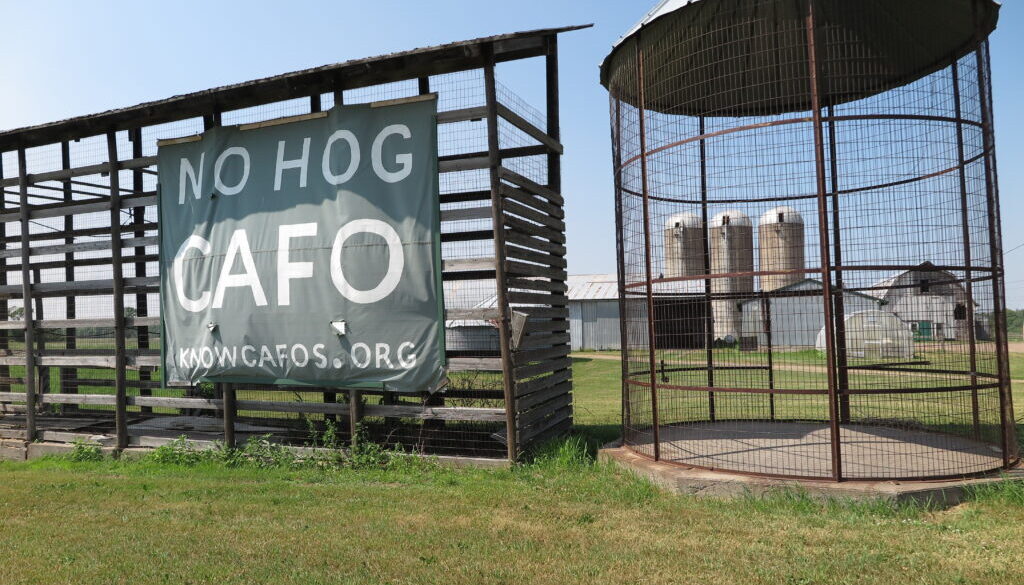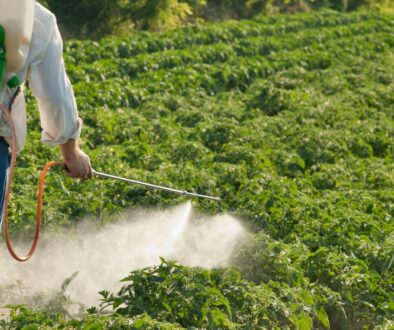US regulators order Minnesota to clean up nitrate contaminated water
 In recognition of pervasive farm-related water contamination, federal regulators have ordered three Minnesota state agencies to address “imminent and substantial endangerment to the health” of thousands of residents who are being exposed to high levels of nitrate contamination in their drinking water.
In recognition of pervasive farm-related water contamination, federal regulators have ordered three Minnesota state agencies to address “imminent and substantial endangerment to the health” of thousands of residents who are being exposed to high levels of nitrate contamination in their drinking water.
The US Environmental Protection Agency (EPA) ordered state officials to urgently address a nitrate-contaminated drinking water crisis threatening the karst region in southeastern Minnesota and provide safe, alternative drinking water for impacted residents.
The EPA directive, which was issued last week, comes in response to a petition filed last spring by the Minnesota Center for Environmental Advocacy (MCEA) and ten other groups calling on the agency to investigate. The action also comes as federal and state authorities in Corn Belt states are expressing growing concerns about threats posed by farm-related water pollution.
“The feds are interested in human health,” said Jeff Broberg, director of the Minnesota Well Owners Organization, an advocacy group. “That’s been the missing link in considering the hazards of nitrate pollution.”
Nitrates form when nitrogen from commercial fertilizer and animal manure are exposed to oxygen. Nitrate exposure has been linked to a range of health problems, including heart and lung problems and certain cancers. Nitrates are known to be particularly dangerous for babies.
The EPA demands for action on nitrate pollution came in a letter to the Minnesota Pollution Control Agency, the Minnesota Department of Health, and the Minnesota Department of Agriculture. In its letter, the EPA said the state must stringently regulate manure management at large livestock operations, a primary source of the contamination. Crop and livestock production accounts for roughly 70 percent of the state’s nitrate pollution, according to the Minnesota Pollution Control Agency.
“We know what causes this pollution. It’s time for Minnesota’s agricultural lobby and the Department of Agriculture to come to the table and agree to real solutions to eliminate this public health threat,” Leigh Currie, MCEA director of strategic litigation, said in a press release.
State data cited by the EPA show that nearly 400,000 people live in the area of southeast Minnesota affected by high nitrate concentrations from agriculture. Nearly 94,000 rely on private wells as their primary source of drinking water and nearly 9,300 people are at risk of consuming water at or above the maximum contaminant level for nitrate, according to officials. In Winona County, for instance, much of the groundwater in the porous limestone beneath the surface is contaminated with some of the nation’s highest levels of nitrates, according to state data. Close to 200 wells in the county have been contaminated with nitrates at levels higher than what federal officials consider safe.
The EPA said priorities in Minnesota include testing drinking water in the region, contacting individual and families at risk, and providing alternate sources of clean drinking water “for as long as nitrate concentrations in the groundwater remain at or above” the federal drinking water limit of 10 parts per million.
The agency also called on Minnesota to establish new rules to limit nitrate pollution from large dairy, swine, and cattle operations, and to enforce violations. The agency said it wants Minnesota to require livestock operatives to install monitoring wells around their feedlots and along fields where nitrogen-rich manure is spread. And the agency wants the state to strengthen rules for when, where, and how livestock operations spread manure and commercial fertilizer on their land.
Neither state authorities nor agriculture trade associations responded to requests for comment.
Nitrate contamination concerns extend well beyond Minnesota. In June, the EPA said it would formally assess the risk to human health from nitrates in drinking water. In Iowa, state Rep. Austin Baeth pledged to hold hearings next year to investigate high cancer rates in a state with the worst nitrate contamination in water and second-highest cancer incidence. And in Nebraska, the University of Nebraska is investigating the links between nitrate contamination and startlingly high rates of pediatric cancer.
(This report, co-published with Circle of Blue, was made possible by an investigative reporting fellowship awarded by the Alicia Patterson Foundation and the Fund for Investigative Journalism. It is part of an ongoing series looking at how changing agricultural policies are affecting human and environmental health.)
(Keith Schneider, a former New York Times national correspondent, is senior editor for Circle of Blue. He has reported on the contest for energy, food, and water in the era of climate change from six continents. )
(Featured photo by Keith Schneider.)




